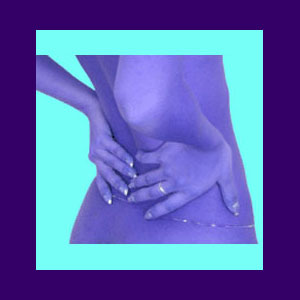
Back and buttocks pain is a debilitating combination of symptoms often linked by the involvement of the postural muscles or the nerves which innervate the postural muscles. Many lower back pain syndromes affect the buttock muscles, as well, since the lumbar region works closely with the gluteals to perform a wide range of physical tasks.
Pain in the buttocks and lower back can be extremely severe and limit the mobility of the patient, since these are the very muscles which allow us to maintain our upright posture and facilitate movement. Of all the combinations of dorsalgia symptoms which may occur together, this particular one is not only the most commonly experienced, but is also one of the worst in terms of pain generated.
This dialog explores back pain experienced in unison or in alternating fashion with buttocks pain.
Sources of Back and Buttocks Pain
There can be many reasons for pain in the lower back radiating into the buttocks. The pain can be burning, shooting, dull or sharp. This pain might be worsened by movement or it might hurt all the time. Here are many of the usual suspected causative issues responsible for the discomfort:
Bulging discs can affect the spinal structures in the lower back and the nerves and muscles in the buttocks. Lumbar herniations might affect the lumbar or sacral nerves, potentially causing sciatica expressions, especially when they exist in a congenitally narrowed canal or one which has been compromised by arthritic activity or ligamentous hypertrophy.
Sciatica is a symptom set where pain in the buttocks and legs is actually more common than pain in the lower back. However, lumbar pathologies often source sciatica and may involve localized, as well as radiating pain.
Piriformis syndrome can create a difficult to diagnose pain problem when the piriformis muscle constricts the passage of the sciatic nerve. Piriformis syndrome should never cause actual low back pain, but statistically usually exists along with it, which may help support why many piriformis pathologies are misdiagnosed.
Sacroiliac joint dysfunction can create serious buttocks, hip and lower back pain. When pain exists too high up, the involvement of the SI joint may be highly suspect.
Spinal stenosis in the lower spine can cause a sympathetic response from nerves and muscles in the buttocks. In fact, spinal stenosis almost anywhere in the vertebral column can enact lower body pain in the back, buttocks, legs and feet.
Muscle injury can affect the injured muscle and those around it. Sympathetic pain in the surrounding tissue is common in lower back muscle injuries. The gluteal muscles can suffer severe pain when affected by nerve innervation issues, as well as direct or sympathetic injury. Remember, the postural muscles work as a team and any damage, deficit or instability in one, will likely have consequences on all.
Psychological back pain can affect all the postural muscles in the lower back and buttocks using regional oxygen deprivation.
Osteoarthritis can create pain in the back, sacroiliac, pelvis and hip. This pain often feels like it is originating in the buttocks.
Back and Buttocks Symptoms Guidance
Acute pain in the postural muscles can be debilitating. Some of the worst pain I ever had affected both my lower back and buttocks. The pain created pressure in my body as if something was pushing my pelvis forward violently. I felt like my lower spine was going to explode out of the front of my abdomen. This terrible pain created a feeling of dread in me at all times. Fear of a recurrence of pain controlled my life for decades. Now, I suffer recurrent sciatica which often begins in the top of the buttocks and works down one or both legs. Actual lower back pain is usually present, but the severity of the pain ranges dramatically.
It is crucial to actively and tirelessly pursue a correct diagnosis when it comes to pain in the lower back and buttocks. The symptoms might be from one or more physical causes, but may also stem from purely mindbody issues. I usually suggest correlation of all symptoms with a neurologist, since these physicians have the best chance of ascertaining the true nature of many combination back and buttocks pain syndromes.




